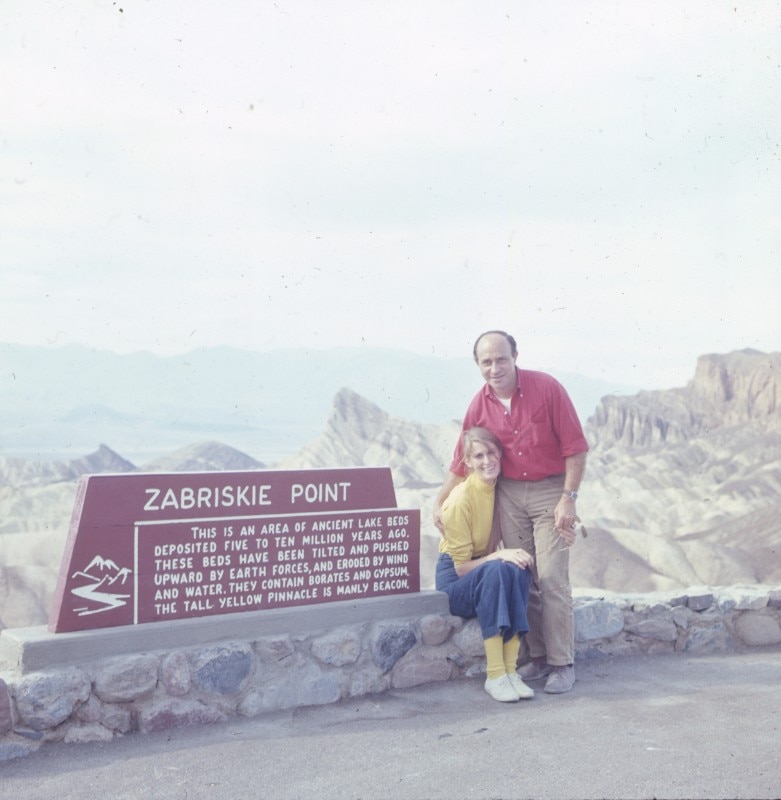There is a beautiful series of photographs of Michelangelo Antonioni and Monica Vitti at the 1962 Venice Art Biennale. Their eyes, in focus, drowning in the blurred silhouettes of some of Giacometti’s sculptures in the foreground. In one snapshot, Monica Vitti reaches out her hand towards one of them, as if enraptured by the surprising materiality of those slender forms.
Another photograph, now treasured at the Fondazione Arnaldo Pomodoro in Milan, holds resemblances to those of the 1962 Biennale: it's on display at “La Negazione della Forma”, an exhibition that will close on May 2024..
On this photograph is a hand-written note: “The more talented you become, the more I love you. Where will we end up! Monica, 1965”. Four years later, Pomodoro was in California, at Death Valley National Park, having his portrait taken in a garish Garibaldi red shirt next to the sign of Zabriskie Point, the set of Antonioni’s masterpiece of the same title.
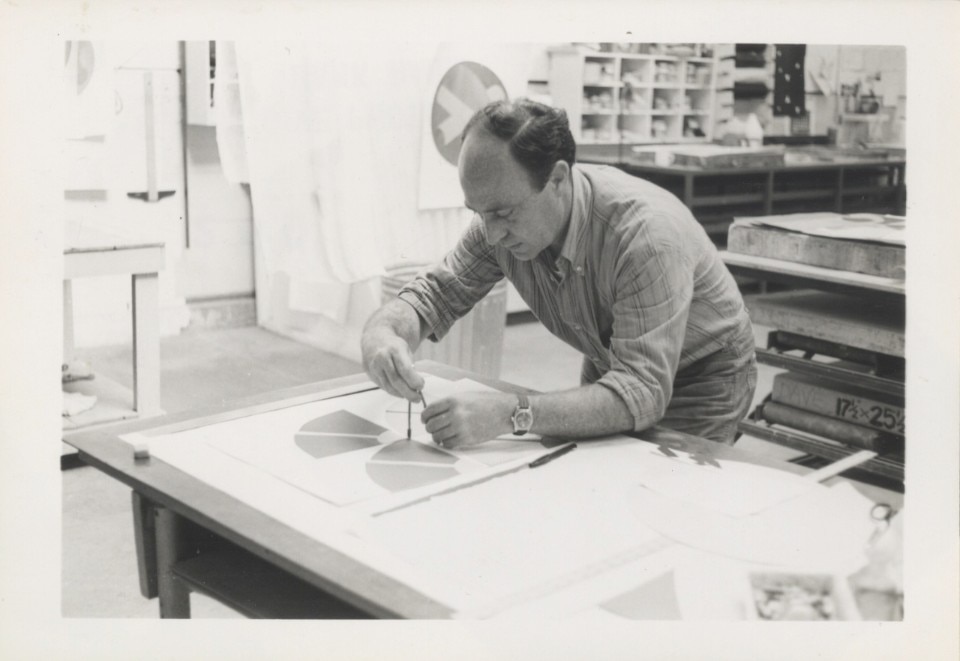
The mutual friendship and professional esteem with Vitti-Antonioni had led him to work, together with a bunch of American artists, on the psychedelic decoration of the plane that can be seen in the film’s ending scene. The work sublimates, in its lysergic and political undertones, the four years, from 1966 to 1970, in which Arnaldo Pomodoro attended Stanford and Berkeley, where his artistic vision forever changed.
A path that is now the focus of “La Negazione della Forma. Arnaldo Pomodoro tra Minimalismo e Controcultura” (The Negation of Shape. Arnaldo Pomodoro between Minimalism and Counterculture), an exhibition in Milan that the Fondazione Arnaldo Pomodoro is dedicating to the sculptor’s American years. Featuring archive drawings, sketches, photographs, documents and films, it showcases a countercultural matrix that has often remained overlooked in favour of the artist’s finished works.
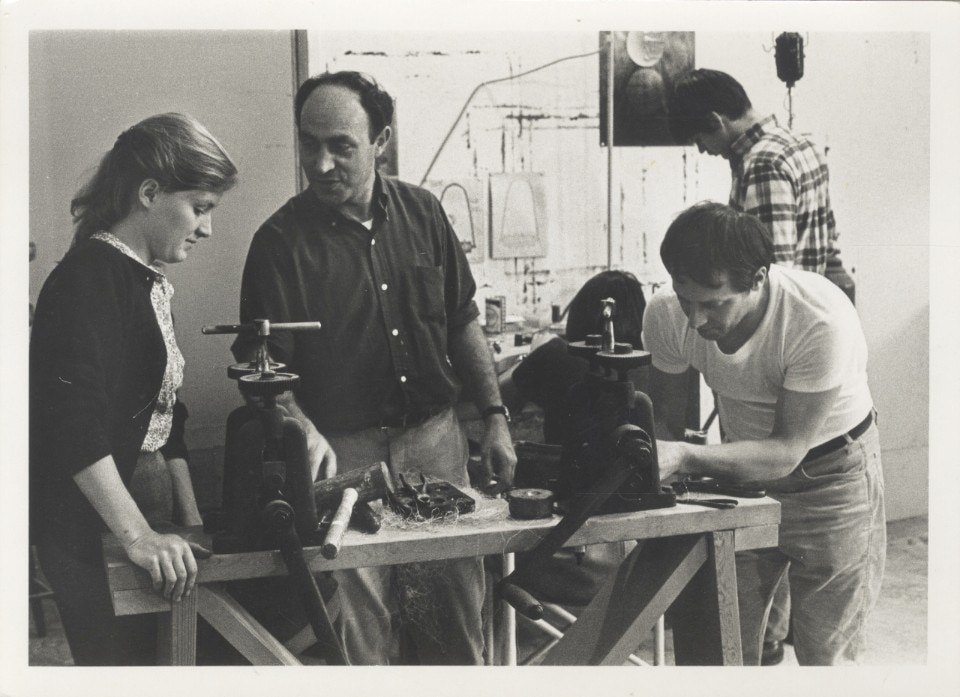
The American years, without a bidet
The artistic residency at the prestigious Stanford University and, above all, the stints as visiting professor at Berkeley introduced the Italian to Black Power and the Beat counterculture, with which he had already come into contact in Milan through the pioneering editorial work of Fernanda Pivano. For Pomodoro, the campus became a fertile ground for dialogue and friendships, especially with the students, whom the sculptor urged to go beyond academic notionism so that they could reflect on the “meaning and role of the intellectual and the artist in our time”.
I can’t stand the conformism of professors who, even without beards or dressed at Brooks Brothers, remain professors.
Arnaldo Pomodoro
In a 1966 letter addressed to the family of the critic, actor and his future biographer Francesco Leonetti (as well as the voice of the crow in Pasolini’s Hawks and Sparrows), Pomodoro wrote, “Free, barefoot, Bermuda shorts, ragged, long-haired... are they really free or is it a form of snobbery? I still don’t understand, my position here is academic or almost. Maybe it’s good that I don’t go and eat lunch with students? But I can’t stand the conformism of professors who, even without beards or dressed at Brooks Brothers, remain professors.”
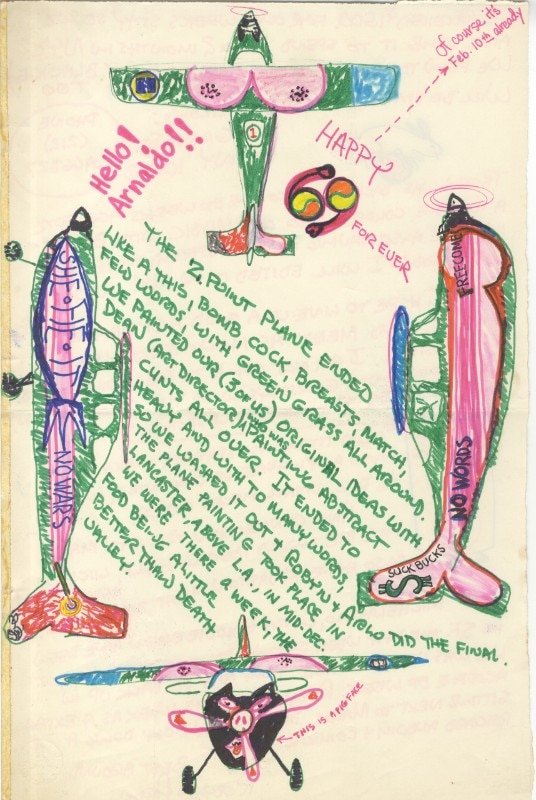
The documents are precious insights into the States from the perspective of an Italian intellectual of the time, on a par with the American writings of Alberto Arbasino, Italo Calvino and Ettore Sottsass Jr.’s Domus column Memoires di Panna Montata. “Fuck to respectability, to puritanism...I miss the bidet, shower upon shower my skin has become dry!”
In the archive photos we witness an informally-dressed Pomodoro, in chambray work shirts like those worn by the young Allen Ginsberg, conversing with long-haired students looking as if they came straight out of the Monterey Pop Festival crowd. One of them, Arlo Acton, will join him for the decorations of the Zabriskie Point airplane.
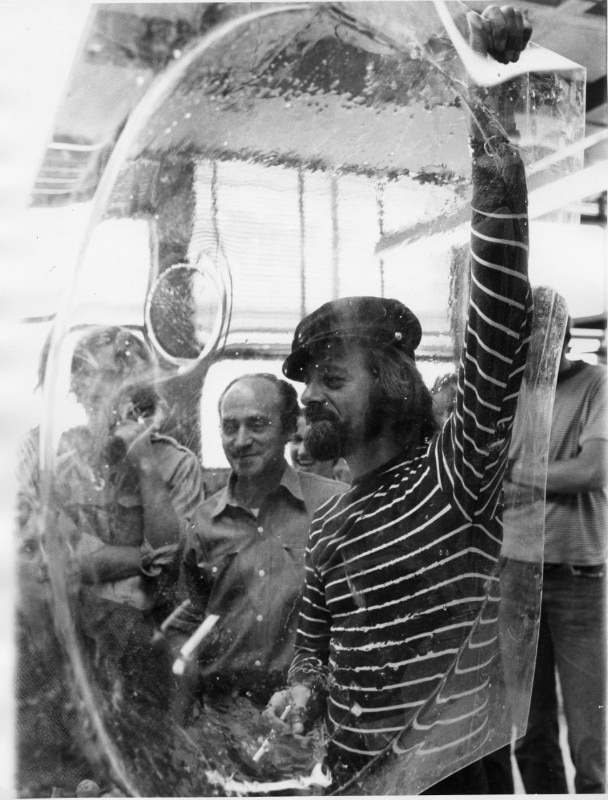
Under Pomodoro’s supervision they shoot experimental Super 8 films with political and Pop tones, against the Nixon administration and the war in Vietnam. An influence that would return, at the height of his American experience, in the experimental film Shaping Negation – La Forma Negativa (1970) directed with Ugo Mulas and Francesco Leonetti. A work born out of Marxist notions to reflect, with self-irony, on the condition of the intellectual-artist in the times of ‘art-commodity’.
One time, not being able to shuttle back and forth between Milan and Berkeley, Pomodoro decided to condense the whole cycle of lectures into a single 24-hour one with multiple guests, which took on the contours of a Beat happening but also of the lysergic festivals of the counterculture, the same ones that were held at the Fillmore East and West in Los Angeles or that, in London, much attracted the young Tinto Brass who was directing Col Cuore in Gola, one of his early experimental films.
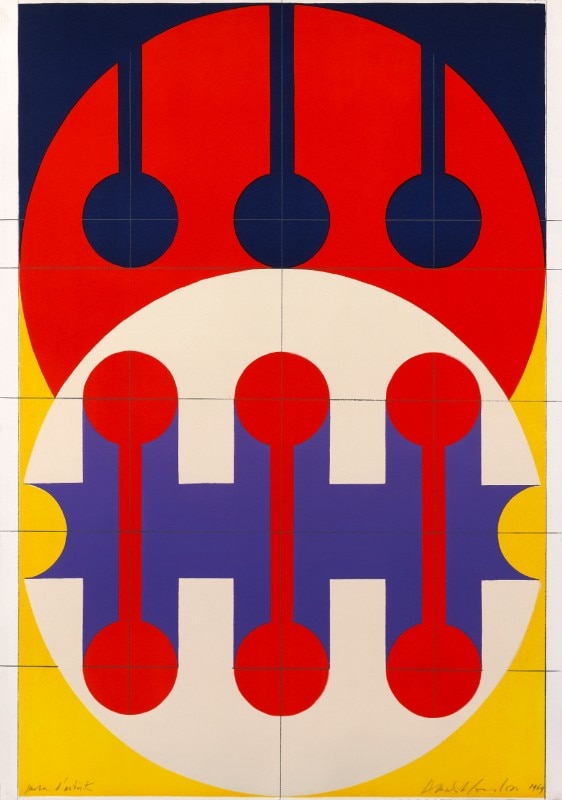
Towards a democratisation of art
The American experience had two great merits. The first was to put Arnaldo Pomodoro in touch with Minimalism, which led the artist to a new concept of sculpture, to be intended as a ‘mental operation’. Said approach found an application into works such as Onda and Forma X, which stand as the materialisations of the negative forms of his study on the famous Rotanti sculptures. Ideas that took shape, first of all, on paper, through axonometric sketches – on display in the Milanese exhibition together with the original sculptures – which highlight in their use of bright colours the great influence the American Pop taste had on the Italian.
The second was to expose him to the most unbridled consumerist culture and, consequently, to an underground art scene bursting with political, participatory and democratic vocations. An environment far removed from that of many Italian galleries with which, however, the sculptor dialogued assiduously with the desire of establishing a bridge between the United States and his motherland. Between 1967 and 1972, in fact, Pomodoro succeeded in bringing Sue Bitney, Harold Paris, William T. Wiley and Stephen Laub, then unknown in Italy, to Milan’s visionary gallery Studio Marconi.
His role, hence, became similar to the one covered in the Belpaese by Fernanda Pivano in the field of American counterculture literature, and later, in the 1980s, by Francesca Alinovi who first exposed Italy to the advent of the graffiti art movement.
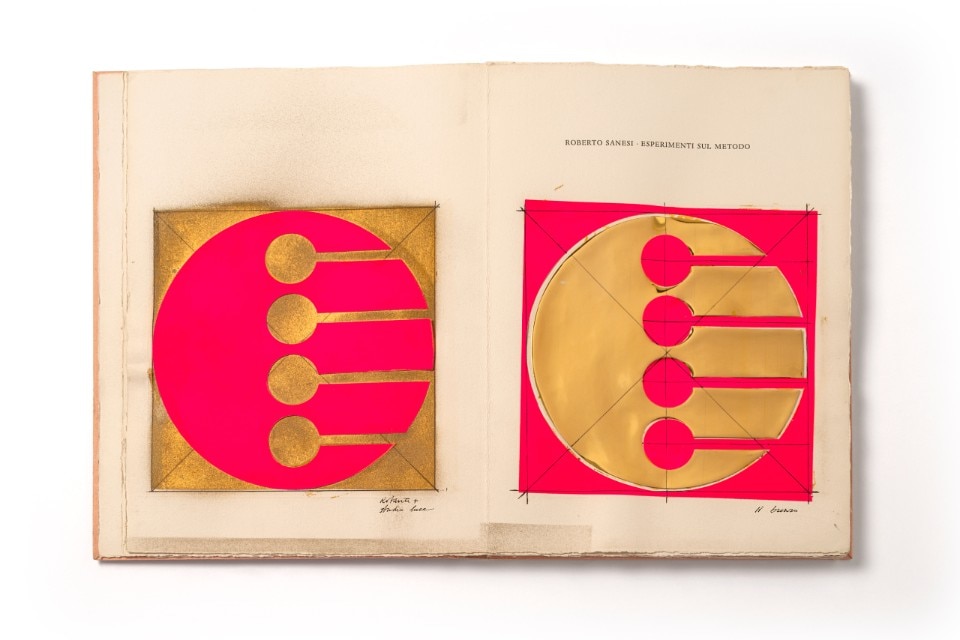
With this new awareness came, among other things, the need to reflect on the “commercial exploitation of art and how an artist must be involved in the social context in which he or she lives”. Hence the desire to democratise his art through large-scale productions such as the jewellery collection produced by GEM Montebello. A collection, sublimely documented by Ugo Mulas, in which Pomodoro’s study on the shape is combined with a taste for futuristic Space Age design. This approach, however, also took the form of ceramic objects (La dualità e l’uno), multiples, artist’s books that become the ground for conducting experiments on method, novel covers such as that of Tappeto Volante by Francesco Leonetti (Mondadori, 1967) and a committed critical and editorial activity with the magazine Che Fare.
The pragmatism defining the American academia was at the same time responsible for another turning point in the practice of Pomodoro, who began to conceive the exhibition as a stage for the verification of the methods and theories explored and, above all, as a countercultural act of contradiction. “Una scultura nella strada” (A sculpture in the street), one could argue, is a manifesto of this: a series of exhibitions held in Milan from 1970 onwards that brought newcomers and revered masters, including on top of Pomodoro himself, Alexander Calder, Ettore Colla and Mauro Staccioli, to the square in front of the Einaudi bookshop in Via Manzoni. In the photographs shot by Ugo Mulas to document the happening, one sees children coming on the way home from school mirroring themselves in Pomodoro’s spherical shapes, amazed as much by the parents accompanying them, thus fulfilling the sculptor’s desire for promoting public art.
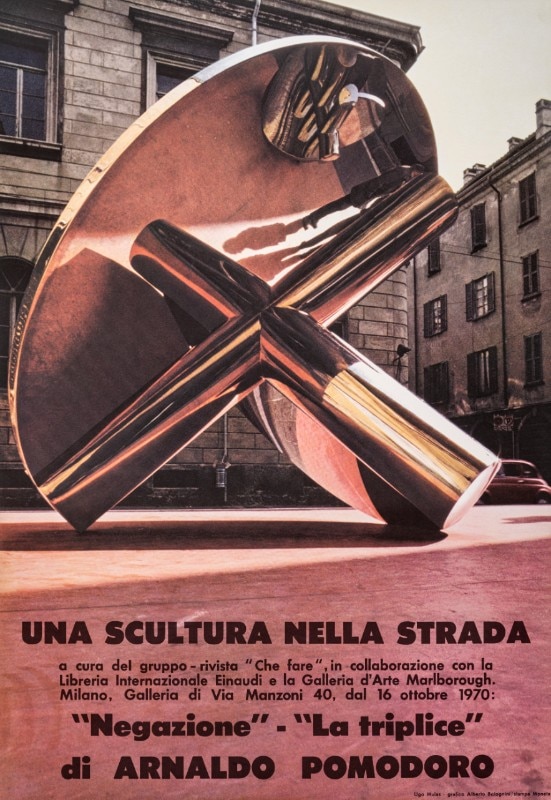
Encapsulating this dual tension in Arnaldo Pomodoro’s life and practice, that between Italy and the United States, but also between the underground and the professional rigour, is his appointment to the sub-committee for figurative arts at the 1968 Venice Biennale. The Biennale of Polizart and of the student uprising, of Ungaretti saluting the protestors and the police charging them on the wet stone of St. Mark’s Square. First Pomodoro took part in the curatorship, then in solidarity with the students he resigned. Berengo Gardin's photos of those tumultuous days frame a Serenissima with a leaden sky, a greyness that seemed to allude to the incipient arrival of the season of the escalation of urban political violence known as Years of Lead. That of the loss of the innocence of the Beat counterculture that Pomodoro met overseas.
“La Negazione della Forma. Arnaldo Pomodoro tra Minimalismo e Controcultura” runs until May 19, 2024 at Fondazione Arnaldo Pomodoro, Milan.
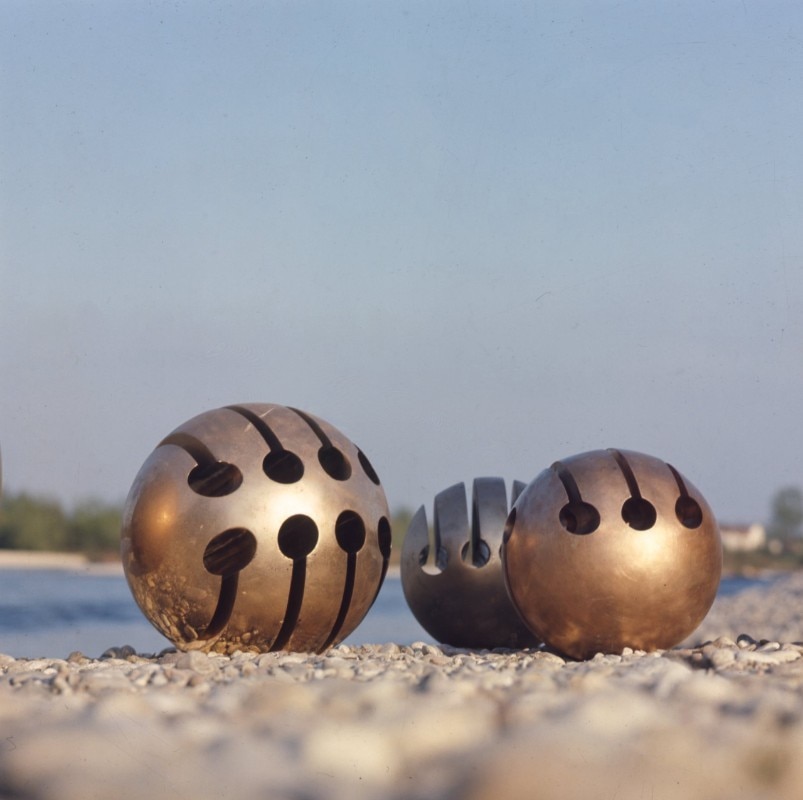
Opening image: Arnaldo Pomodoro and Robyn Martin (Arlo Acton’s partner) in Zabriskie Point, 1970. Photo courtesy Fondazione Arnaldo Pomodoro.
- Exhibition:
- La Negazione della Forma. Arnaldo Pomodoro tra Minimalismo e Controcultura
- Location:
- Fondazione Arnaldo Pomodoro, Via Vigevano 9, Milan, Italy
- Dates:
- from March 12, 2023 to May 19, 2024
- Curated by:
- Federico Giani


